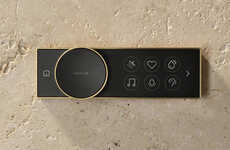
Building Information Modelling is Adopted by Brands Like Kaldewei
Kalin Ned — October 30, 2018 — Art & Design
References: dezeen
Bathroom brand Kaldewei is implementing BIM into its practice, thus providing architects and clients with an efficient design-assistant tool.
Building Information Modelling is a process that relies on collected data to create a digital representation of both the physical and functional characterization of a space. This information is contained in relevant 3D models that are fluid accross industries. Kaldewei is a true innovator in its product category. By recognizing the value of BIM in terms of spatial arrangement, the German label is able to introduce an exceptionally crucial visual component to its product that cannot be achieved otherwise. Thus, the digital design-assistant tool gives architects and potential clients a reason to opt-in for the tech-savvy Kaldewei.
Building Information Modelling is a process that relies on collected data to create a digital representation of both the physical and functional characterization of a space. This information is contained in relevant 3D models that are fluid accross industries. Kaldewei is a true innovator in its product category. By recognizing the value of BIM in terms of spatial arrangement, the German label is able to introduce an exceptionally crucial visual component to its product that cannot be achieved otherwise. Thus, the digital design-assistant tool gives architects and potential clients a reason to opt-in for the tech-savvy Kaldewei.
Trend Themes
1. Building Information Modelling - Implementing BIM as a design-assistant tool presents disruptive innovation opportunities for brands in the architecture and construction industry.
2. Digital Representation - Developing efficient 3D models as digital representations offers disruptive innovation opportunities for various industries, including architecture and product design.
3. Tech-savvy Products - Using digital design-assistant tools can create disruptive innovation opportunities for brands in product categories that heavily rely on spatial arrangement, such as furniture and home decor.
Industry Implications
1. Architecture - Integrating BIM into architectural practices can lead to disruptive innovation opportunities in terms of design efficiency and collaboration.
2. Construction - Leveraging BIM as a design-assistant tool in the construction industry can revolutionize project planning and coordination, offering disruptive innovation opportunities.
3. Product Design - Adopting digital design-assistant tools like BIM can disrupt the product design industry by enabling more accurate and visually appealing representations of products.
4.6
Score
Popularity
Activity
Freshness























